Name Art Babbitt | Years active 1936–1992 | |
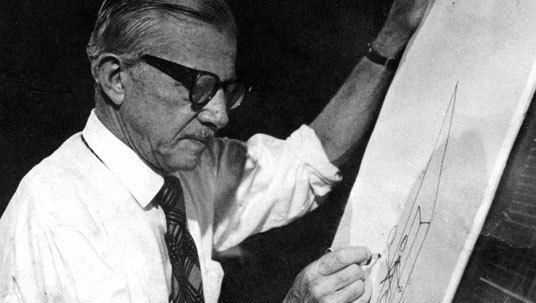 | ||
Full Name Arthur Harold Babitsky Children Karen Babbitt, Michele Babbitt Similar People Dina Babbitt, Marge Champion, Pinto Colvig, Barbara Perry, Paul Murry | ||
Art babbitt animation
Arthur Harold Babitsky (October 8, 1907 – March 4, 1992), better known as Art Babbitt, was an American animator, best known for his work at The Walt Disney Company. He received over 80 awards as an animation director and animator, and also developed the character of Goofy. Babbitt worked as an animator or animation director on such films as The Three Little Pigs (1933), Snow White and the Seven Dwarfs (1937), Fantasia (1940), and The Incredible Mr. Limpet (1964), among others.
Contents
- Art babbitt animation
- Art babbitt reference for animation
- Early life
- Career
- Disney Studio
- Cartoonist Strike
- WWII
- Career after Disney
- Family life and legacy
- References
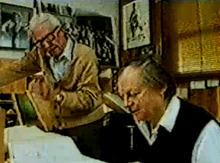
Art babbitt reference for animation
Early life
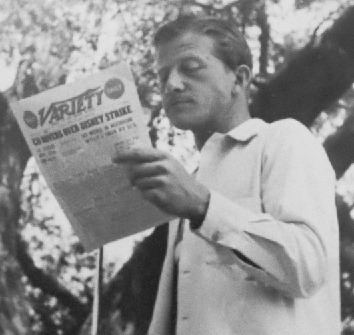
Babbitt was born to a Jewish family in Omaha, Nebraska in the Little Bohemia section of town near the Bohemian Cafe restaurant, but moved to Sioux City, Iowa after he finished kindergarten. When his hard-working father had an accident on duty and became paralyzed as a result, Art decided to move to New York to take on the role of breadwinner.
Career

Art Babbitt began his career in New York City working for Paul Terry's Terrytoons Studio. But in the early 1930s he moved to Los Angeles followed by his fellow Terrytoon colleague Bill Tytla, and secured a job animating for the Walt Disney Studio, which was expanding at the time.
Disney Studio

Babbitt began his career at Disney as an assistant animator, but his talent was spotted and he was soon promoted to animator. His first important work was a drunken mouse in the short "The Country Cousin"(1936), which won an Academy Award for the studio.
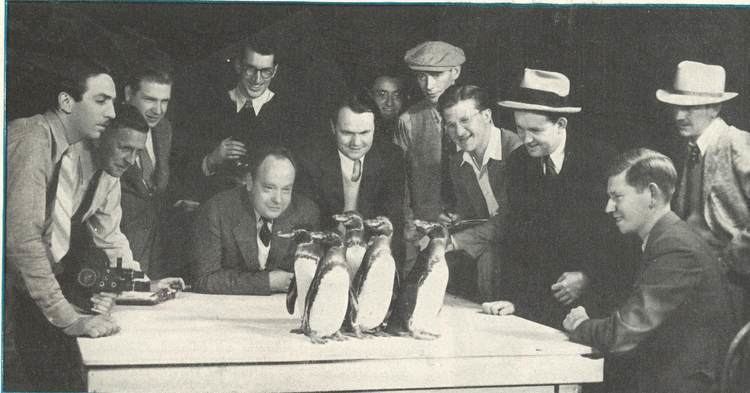
At the Disney Studio, Babbitt animated the Wicked Queen in Snow White and the Seven Dwarfs, a job described by Disney animator Andreas Deja as "one of the toughest assignments" on the film. It was on Snow White that he met his first wife, Marjorie Belcher, a dance model whose live-action performance was used as reference material by the animators for the role of Snow White.
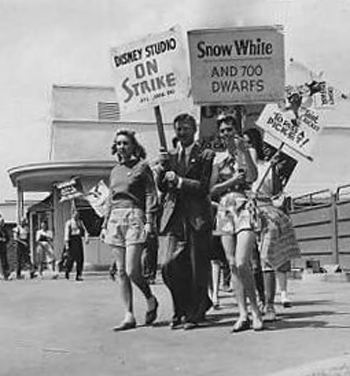
On the film Pinocchio, Babbitt animated the character of Gepetto, and became a directing animator. Of all Disney's films, "Pinocchio" was the feature which Babbitt most admired, and which he regarded as the finest achievement of the studio during the "Golden Age" of animation. Babbitt also animated the characters of Zeus, Vulcan, and the dancing mushrooms in Fantasia. On the feature film Dumbo, Babbitt was again made a directing animator, and animated the character of the stork. When animating the stork, he made him resemble his voice actor, Sterling Holloway. Babbitt is also credited with developing the character of Goofy, a character which he later described in the 1987 documentary film "Animating Art":

During the 1930s Babbitt rose to become one of Disney's best-paid artists, and enjoyed a lavish lifestyle despite the austerity of the Great Depression:
"I was living the Life of Riley. I didn't realise how fortunate I was. I was earning a very good salary. I had two servants, a large house, and three cars. You know, what in the world was I going to do with three cars?"However, despite this prosperity, in 1940 he and his wife Marjorie were divorced.
Cartoonist Strike
Despite being one of the highest paid animators at Disney, Babbitt was sympathetic to the cause of lower echelon Disney artists seeking to form a union. Most of the strikers were in-betweeners, cel painters, and other less-well paid employees, who in 1941 began industrial action in pursuit of better working conditions. As a top animator, Babbitt was one of relatively few well-paid artists to join the strike, and he became one of the strike leaders. One morning, as Disney drove through picketing workers on his way to the studio, Babbitt heckled him through a bullhorn. Disney exited his car to confront him, and a fistfight was only prevented by the intervention of others.
For his part in the strike, Babbitt earned Walt Disney's enmity. Disney was forced to re-hire Babbitt after the strike was over, along with many other strikers, but by then the two men hated one another. Babbitt worked with director Jack Kinney, another "Goofy man" (meaning that they worked together on the Goofy shorts), as Disney began to look for ways to be rid of Babbitt. "If he gets in your way, let me know", Disney said to Kinney. Babbitt was fired more than once but was re-instated, taking his case successfully all the way to the Supreme Court of the United States, and winning a handsome settlement.
WWII
After serving with the Marines in the Pacific in World War II, Babbitt returned to Disney for a time, following an "unfair labor practices" suit brought by Babbitt against Disney. Disney was forced to rehire him after the war, but Babbitt did not stay long.
Career after Disney
Along with some other former Disney strikers, Babbitt left Disney and went to join the United Productions of America (UPA), a new studio which pioneered a modern, simplified form of animation. He worked on many of their famous award-winning shorts, including the lead character Frankie in "Rooty Toot-Toot" (1951), and won many awards. In the 1950s he was part owner of Quartet Films, where he worked on television commercials, including the Cleo winning "John & Marsha" spot for Parkay Margarine. Later he was part of Hanna-Barbera's commercial wing.
Known in the animation world as one of the art's most accomplished teachers, in 1973 Canadian animator Richard Williams brought Art Babbitt to his London studio in Soho Square to deliver a series of lectures on animation acting and technique that subsequently became famous among animators. Some of Babbitt's final work was on the characters King Nod and Phido, the vulture, in Williams' film The Thief and the Cobbler. He also animated the Camel with Wrinkled Knees in William's Raggedy Ann and Andy: A Musical Adventure.
In 1991 Disney Company chief Roy E. Disney, the nephew of Walt, contacted Art Babbitt and they ended the long feud. Art's former rivals, the pro-Walt animators Frank Thomas and Ollie Johnston, gave Art a warm and moving eulogy at his funeral service.
Family life and legacy
His first wife (1937–1940) was Marge Champion, a dance model in Snow White and the Seven Dwarfs. His second wife was Dina Babbitt, an artist and a Holocaust survivor. He had two daughters with Dina, L. Michele Babbitt and Karin Wendy Babbitt. His third wife until his death was actress Barbara Perry. Babbitt died of kidney failure on March 4, 1992. In the late 1980s, a British television documentary titled Animating Art was broadcast, celebrating Babbitt's life and work. The documentary was produced and directed by Imogen Sutton (Richard Williams' wife), and features extensive interviews with Babbitt and his then employer, Richard Williams. Babbitt was posthumously named a Disney Legend in 2007.
The Academy Film Archive holds a small collection of personal films belonging to Art Babbitt.
